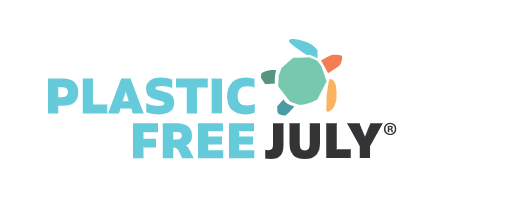
Happy July! I can still say that, right? Have you heard of “Plastic Free July”? I figure since the month is almost half way over, I should really start talking about it!
Plastic Free July is a global movement encouraging everyone to refuse single use plastic for one month. Practicing with intention for the month of July allows us to find creative solutions and create new habits that will make our lives more sustainable.
Beginning in 2011, this movement has inspired over 250 million participants in 177 countries to think differently about single use plastic and plastic pollution so we can have cleaner streets, oceans, and beautiful communities. The movement encourages us, as individuals, to make small changes that collectively make a massive difference to our communities.
I encourage you to read more about the movement at plasticfreejuly.org and make a personal commitment to look for lasting ways reduce your single use plastic consumption.
This month I’m committed to tackling my condiments! Condiments, you ask? Yes! Condiments! Nearly all condiments come in single use plastic containers and most of them are really easy to make yourself!
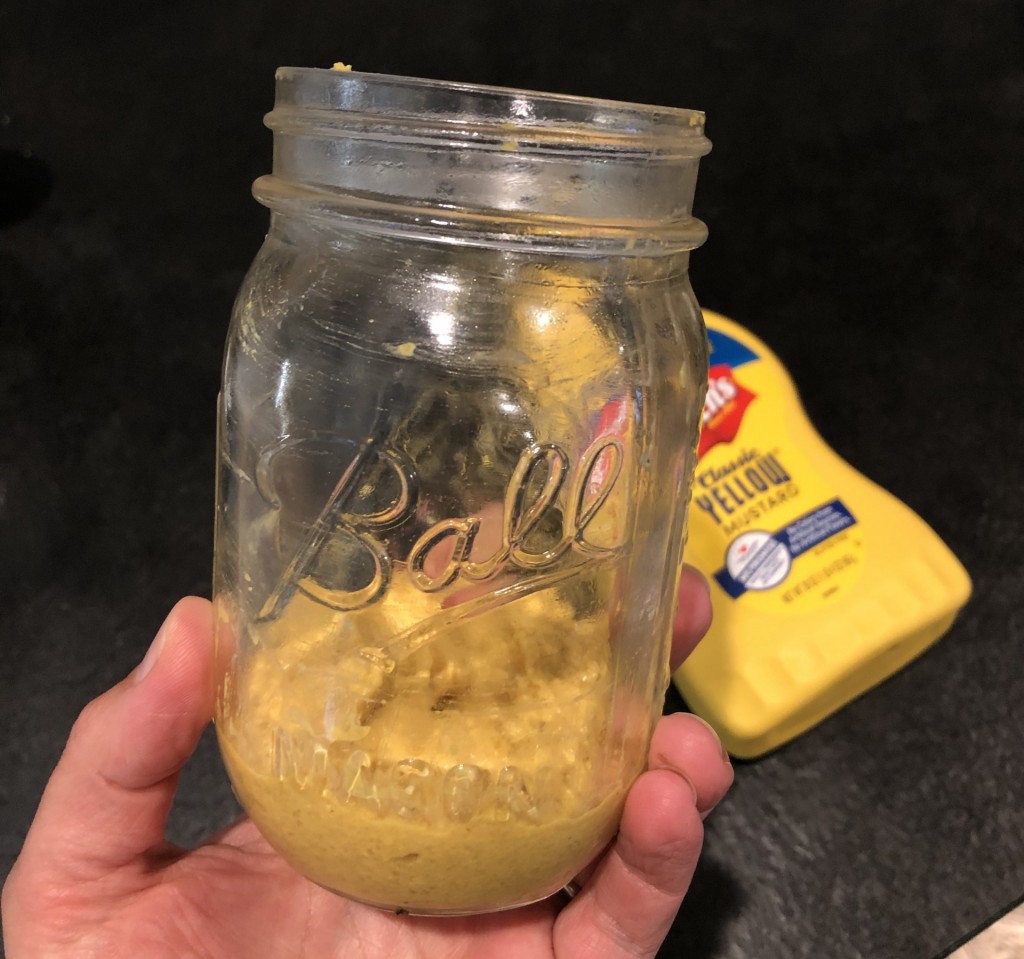
So, by eliminating the dozens of single use plastic containers that accidentally come into my life because they contain salad dressing, mustard, mayonnaise, ketchup, and countless other condiments… I’m eliminating tons (literally, hundreds of pounds) of plastic over my lifetime.
Now, I’m talking about the big bottles of condiments you buy from the grocery store. An even bigger opportunity is to reduce the tiny containers of condiments (and utensils) that come with your fast food or take out order. If you’re looking for an even easier place to start… practice saying “I don’t need any napkins, utensils, or condiments with my order. Please don’t give me anything other than my food in my takeout bag.”
OK. Back to the containers of condiments in my fridge… I’m going to systematically review each one and try to find an easy and delicious recipe to make it at home. They have to be equally delicious because I’m unwilling to waste my time making something that I will have to cajole, convince, or downright force my family to eat when I take away their beloved commercial version.
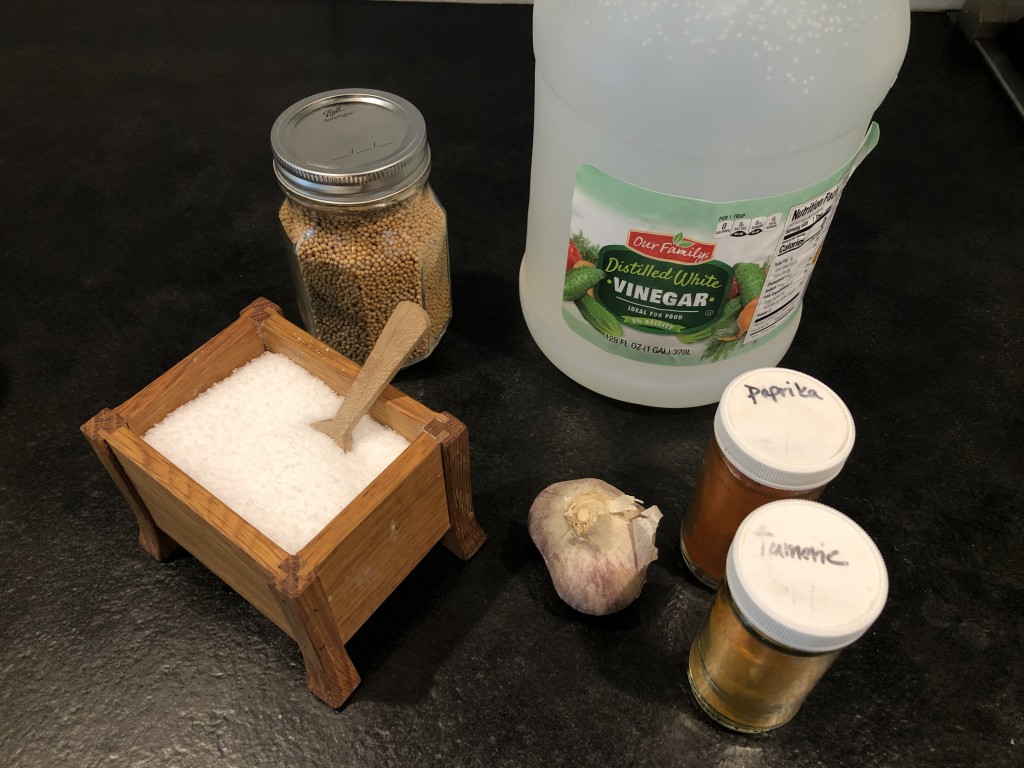
Now, some of the ingredients, like distilled white vinegar, will inevitably come in single use plastic containers, so here’s my hierarchy of values:
- Whenever possible, I will buy my ingredients in bulk and use my own reusable containers at the grocery store. This is generally possible for spices, like the mustard seeds, paprika, and turmeric in the recipe below.
- My next best choice will be to buy ingredients in pre-packaged glass or metal containers. Glass and metal are both better than plastic because these materials can be recycled over and over again, still make useful products, and the recycling market exists to do so (as long as you recycle them when you’re done!)
- If there are no other options and a single use plastic package is the only one available, my very last choice is to buy my ingredients in the biggest container I can find. At least this maximizes the food to packaging ratio (meaning I get more food with less packaging).
Enough rambling about Plastic Free July and single use plastic… First up, mustard!
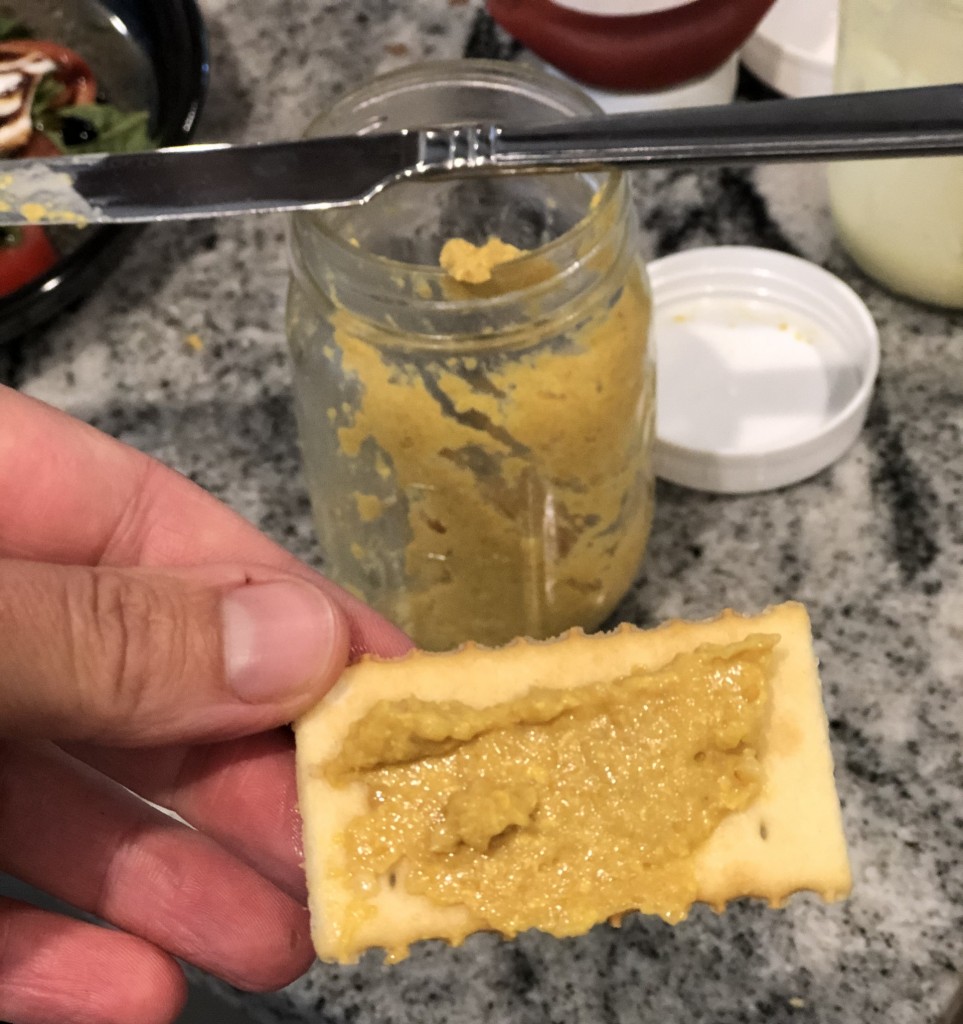
I went looking for a recipe for a plain old basic yellow mustard. One that my kids would love (or at least they wouldn’t notice the swap).
I tried the first one I found and my kiddos LOVE it! In fact, this recipe makes almost a pint of mustard, we made it on Sunday and have eaten more than half in just three days!
Homemade Yellow Mustard
adapted slightly from Leite’s Culinaria
Ingredients
1 cup cold water
3/4 cup yellow dry mustard*
3/4 teaspoon coarse sea salt or kosher salt
1/2 teaspoon ground turmeric
1 garlic clove*
1/8 teaspoon paprika
1/2 cup white distilled vinegar
Assembly
Place the water, dry mustard, salt, turmeric, garlic, and paprika in a small saucepan and whisk until smooth. Cook the mixture over medium-low to low heat, stirring often, until it bubbles down to a thick paste, 30 to 45 minutes.
Whisk the vinegar into the mustard mixture and continue to cook until it’s thickened to the desired consistency, 7 to 15 minutes.
Let the mustard cool to room temperature. Transfer the mustard to an airtight container, cover, and refrigerate for up to 3 months.
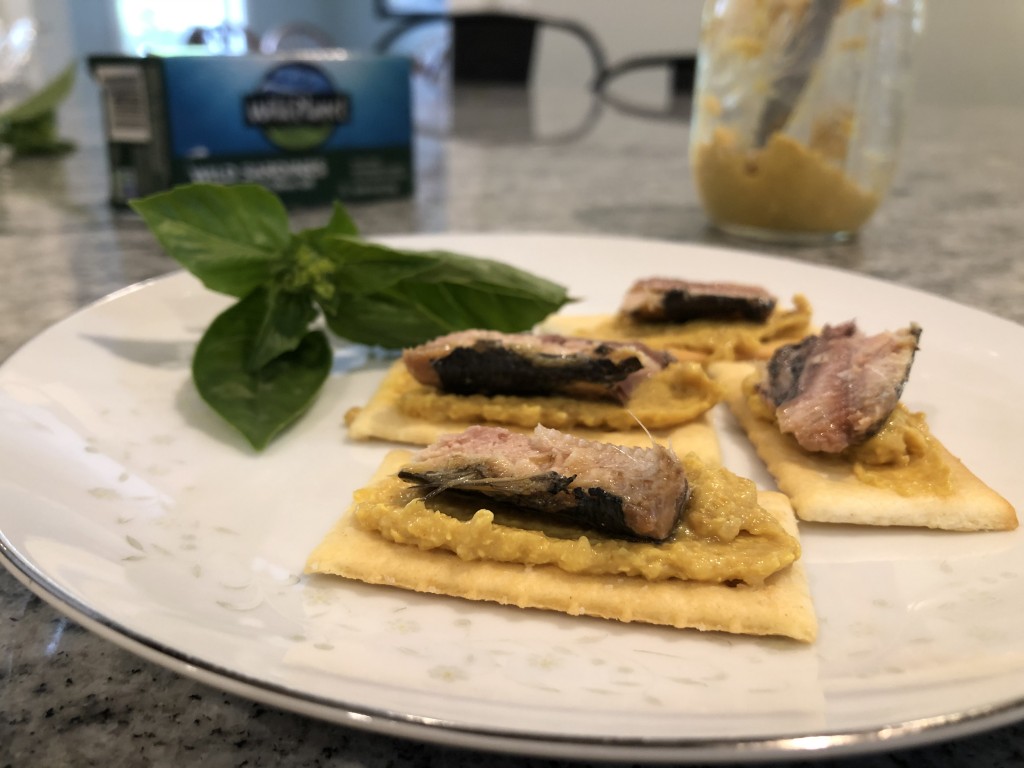
What’s your most beloved commercially made condiment? What’s the one you’re scared to even try making yourself?
Ours is ketchup! I’m committed to finding a recipe we all love once the tomatoes start rolling in from our garden and the farmers market. Send me your ketchup recipes if you’ve got ’em!
*Recipe Notes:
- we used whole mustard seeds and ground them into a powder ourselves, but you can use either whole seeds or ground mustard, whichever you can find easily at your grocery store
- the recipe says you can use 1/8 teaspoon of garlic powder instead of the clove if that’s easier
